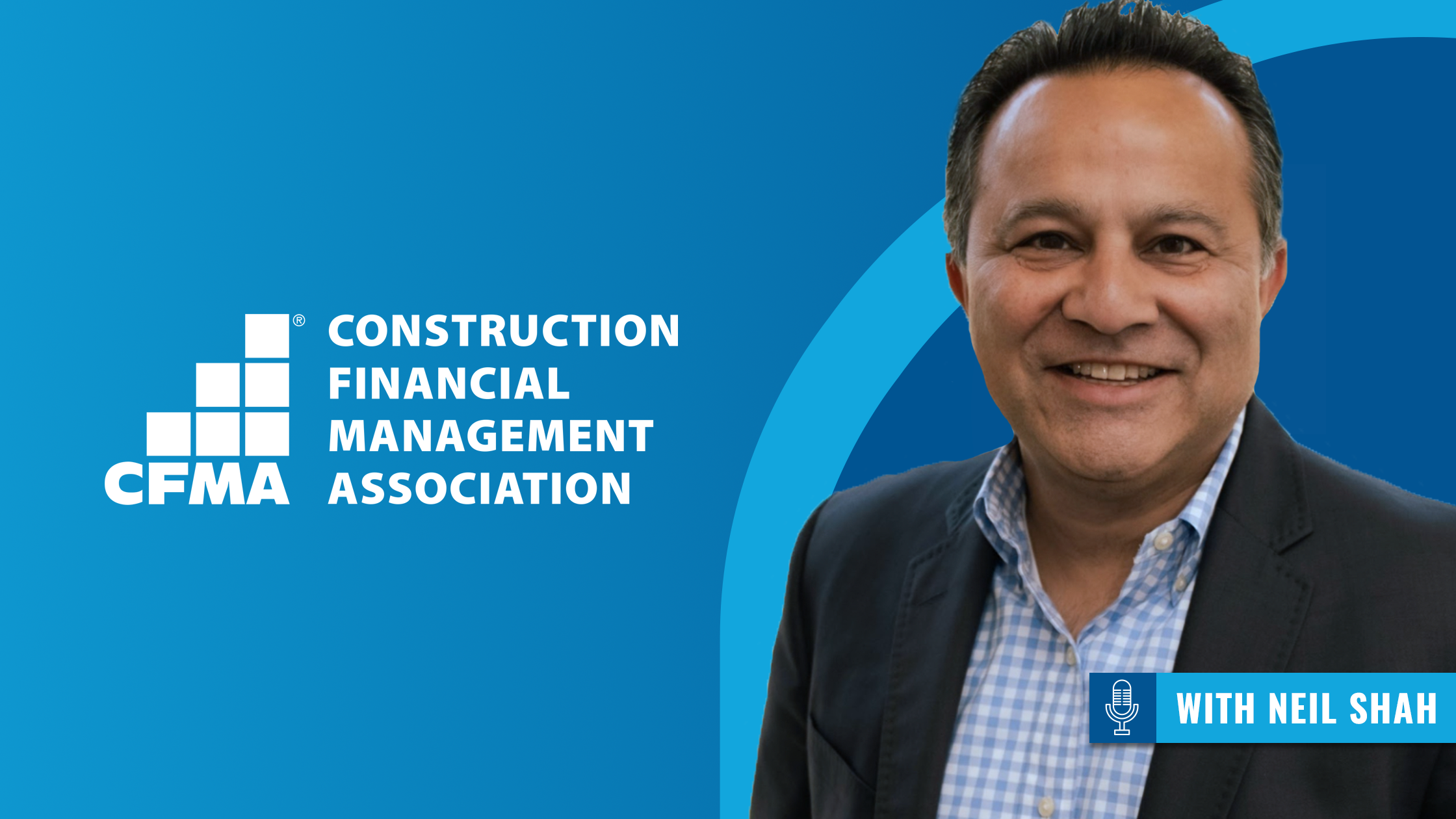When you think of construction, images of cranes, hard hats, and towering steel beams come to mind. But behind every successful project is another critical force—financial management. At the intersection of money and mortar sits the Construction Financial Management Association (CFMA), an organization dedicated to strengthening the economic backbone of the industry.
We sat down with Neil Shah, President and CEO of the CFMA, to discuss how his aerospace roots prepared him for leadership, why the construction industry has an image problem, and how it can better support its workforce, both financially and mentally.
This interview has been edited for length and clarity. To see the full interview, check it out on our YouTube Channel: https://youtu.be/4YVG8BOp7Rs
UTHH: You started your career in aerospace engineering. How did you end up leading the CFMA?
Neil Shah: Like many people, I didn’t set out to work in construction. I thought I’d spend my life working with airplanes. But over time, I moved into real estate and construction services. That’s the thing, people often land here “by accident.” What we’re trying to do at CFMA is change that narrative. Construction should be a destination of choice, whether you’re entering as a tradesperson or a financial professional.
UTHH: For readers who don’t know, what exactly does the CFMA do?
NS: CFMA was founded in 1981 and now has about 11,000 members across the construction ecosystem. Our general members include financial leaders, CFOs, controllers, and accountants from construction firms. Our associate members include accounting firms, banks, insurers, technology providers, and equipment companies. Together, we form the only organization in the world where financial management and construction truly intersect.
We’re focused on education, community, and recognition. From construction-specific accounting, including percentage of completion, work-in-progress, retainage, and cash management, to risk management and IT systems, we provide financial professionals with the tools to keep firms healthy and growing. And we make sure the industry recognizes just how critical these roles are.
UTHH: Construction already struggles with labor shortages in the trades. Is it even harder to attract people to the financial side?
NS: Absolutely. It’s hard enough getting people onto job sites; convincing them to come into the back office is even tougher. That’s why we emphasize reframing what construction really is. It’s not just remodeling kitchens. It’s about building the places where we live, work, and play. It’s infrastructure, schools, hospitals, and cultural centers.
Once you see it that way, construction becomes a career with real purpose. Our goal is to make young people see that, whether they want to be on-site or in the C-suite.
UTHH: You’ve also been vocal about mental health and suicide prevention in the industry. Why is that such an urgent issue?
NS: Because the numbers are staggering. In the U.S., construction loses about 1,000 people a year to jobsite accidents, but around 5,000 to suicide. That means we lose five times more people to mental health struggles than to safety incidents.
CFMA helped form the Construction Industry Alliance for Suicide Prevention, a coalition of more than 40 organizations working to end the stigma, drive awareness, and support workers. September is Suicide Prevention Month, but this work is year-round. If we want to attract the best and brightest, we also have to take care of them once they’re here.
UTHH: Where do you see CFMA heading in the next five years?
NS: We’ll celebrate our 45th anniversary in 2026, and we’re building a plan toward our 50th. Membership growth has been strong, with about 1,000 new members per year. If we can reach 20,000 by the 50th anniversary, that would be wonderful. We’re also expanding our data products, including the CFMA Financial Benchmarker, which lets firms anonymously compare performance to peers by size, geography, and segment, and our heavy equipment comparator that helps optimize equipment performance.
At the individual level, we’re promoting our Certified Construction Industry Financial Professional (CCIFP) designation, which sets the standard for excellence in the field. Ultimately, our goal is to make CFMA the go-to resource for what “good” looks like in construction finance, at the firm and professional level.
UTHH: If someone wanted to get involved with CFMA or learn more about construction finance, where should they start?
NS: The best first step is to attend a local CFMA chapter event. We have 90-plus chapters across the U.S., and our members are incredibly engaged and welcoming. Joining CFMA gives you access to thought leadership, education, and, just as important, a peer group that understands the challenges you face. What we offer is just as much about community as it is about knowledge.
UTHH: Any final thoughts?
NS: Construction is an industry that creates communities. Whether it’s a school, a hospital, or a cultural center, these projects shape how we live. The financial professionals behind the scenes play a critical role in making that possible. My mission is to make sure their contributions are recognized and that the next generation sees construction as a career of choice.
Stay ahead of the curve in construction and finance. Subscribe to our newsletter for more interviews, insights, and industry news delivered straight to your inbox.


